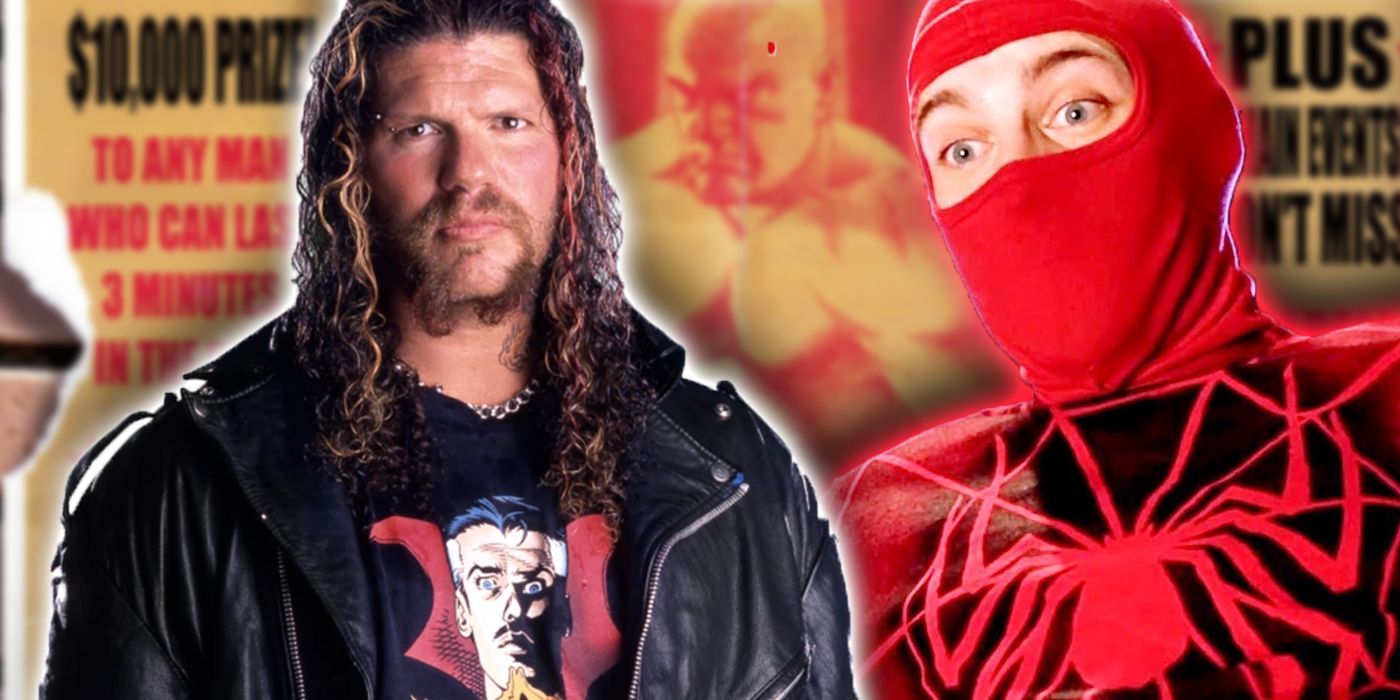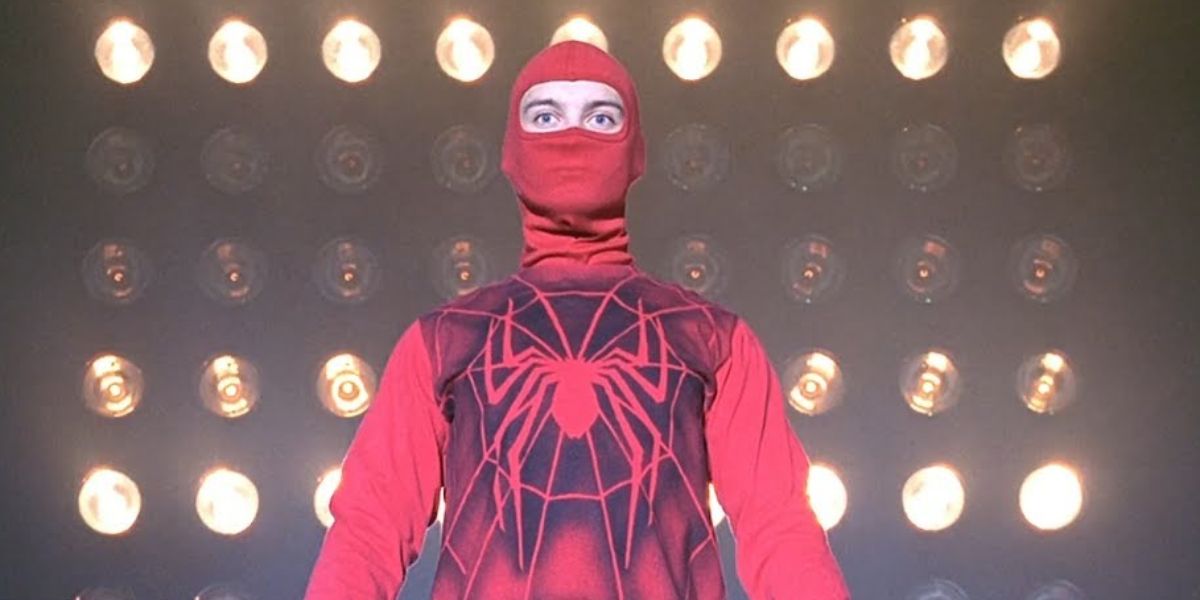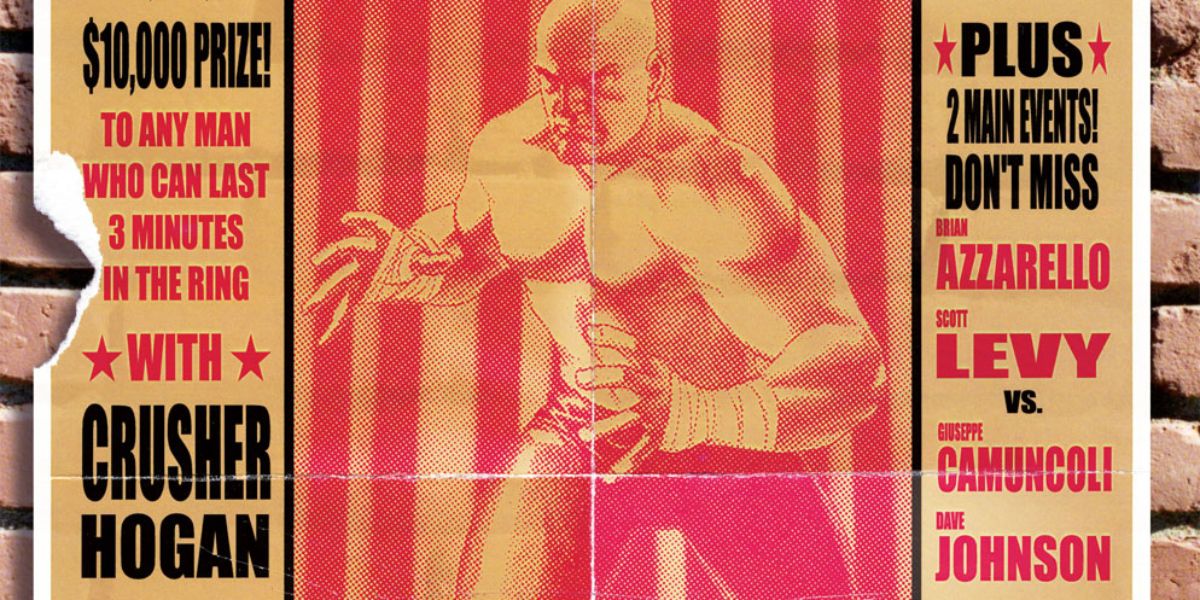
During Peter Parker/Spider-Man's 1962 debut in Stan Lee and Steve Ditko's Amazing Fantasy #15, the superhero-to-be accepted a challenge offering a cash prize to anyone who could last three minutes in the ring with professional wrestler Joseph "Crusher" Hogan. Spidey handily won the bout in what would prove to be a pivotal moment in his early career. In 2002, director Sam Raimi even adapted the match for the big screen in his original Spider-Man film, albeit with Crusher Hogan being replaced by Bonesaw McGraw, who was played by late professional wrestling legend "Macho Man" Randy Savage.
During the cinematic matchup, Bonesaw catches Spidey with a vicious chair shot while the latter's back is turned. A popular fan theory suggests that the reason Peter's Spider-Sense did not alert him to the imminent strike is because pro wrestling is "fake" and, therefore, he was in no real danger. However, a Spider-Man comic book penned by another wrestling legend reimagined Spidey's match with Crusher Hogan, confirming that it was very real.

Between June 2001 and March 2003, Marvel Comics published Spider-Man's Tangled Web, a 22-issue anthology series that put the focus on Spidey's supporting cast and featured a slew of creators not typically associated with the Marvel superhero. July 2002's Spider-Man's Tangled Web #14 features a story called "The Last Shoot," which gives Crusher Hogan his own backstory. The issue was co-written by Brian Azzarello and illustrated by Giuseppe Camuncoli. Azzarello's co-writer on the book was none other than real-life pro wrestler Scott Levy, better known by his ring name, Raven.
Over his decades-long career, Raven has performed for such promotions as WWE, WCW and Impact Wrestling, though is perhaps most famous for his era-defining run in ECW during the 1990s. While in the ring, Raven would often quite literally wear his love of comic books on his sleeve, sporting t-shirts featuring characters like Doctor Strange, the Inhumans and Neil Gaiman's Sandman. Raven's influence is very apparent in the script for "The Last Shoot," which offers a peek behind the curtain of pro wrestling and uses various insider terms, including references to being "buried," putting someone (or something) "over," "selling," "working stiff," "cutting a promo" and, most pertinently, "shoot" wrestling.
In the world of pro wrestling, the word "shoot" refers to anything that is not part of a script and is 100 percent real. Wrestlers will often give shoot interviews in which they dish on behind-the-scenes happenings, a wrestler might get on the microphone and break character to cut a shoot promo and, in extreme cases, wrestlers might shoot wrestle, which refers to when they start fighting in the ring for real.
Wrestling is an inherently cooperative art form, though there are a number of reasons as to why a shoot match might break out. One of the most common is when one wrestler no-sells their opponent's offense (i.e. acts like it doesn't hurt), works stiff with their opponent (i.e. strikes them harder than necessary) or just generally acts selfish in the ring, which might cause their opponent to physically retaliate.

One rather famous instance of this was when Japanese wrestling legend Antonio Inoki, the founder of New Japan Pro-Wrestling, fought a wrestler named The Great Antonio in 1977. Throughout the match, The Great Antonio repeatedly no-sold Inoki's moves, which made Inoki visibly upset. The final straw, however, was when The Great Antonio hit Inoki with a few too many stiff shots to the back of the neck, causing Inoki to fight back and legitimately beat his opponent to the ground.
This brings us back to Raven and Azzarello's depiction of Crusher Hogan, who is a self-proclaimed "shooter." In fact, Spider-Man's Tangled Web #14 opens on a scene very similar to the battle of the Antonios, with Hogan nearly breaking his opponent's arm following repeated no-selling and stiff shots on the latter's part. The other wrestler confronts Hogan backstage after the match, at which point Hogan warns him that it could end much worse for him if he ever does that sort of thing again.
Despite his violent reputation, Hogan is well-respected among his fellow wrestlers, largely thanks to the loyalty he has for their small promotion. However, that loyalty is put to the test when Hogan's boss suggests he take a job with a larger promotion, as the company is circling the drain and can't afford to keep running shows much longer -- a concept co-writer Raven is very familiar with, given the ultimate fate of ECW.
At the end of his rope, Hogan soon hatches a plan to save his home company. After his next match, he gets on the mic and cuts a scathing shoot promo on his fans, burying his own promotion and putting over the larger company. The ensuing controversy results in massive demand for tickets to the following show.

As it turns out, this is all part of a deal Hogan cut with the larger promotion, which gives him $10,000 with the understanding that he will pay it back with interest. Hogan plans to offer the money as a prize to anyone who can last three minutes with him in a shoot match during the main event of his company's biggest show ever, correctly predicting that multiple overconfident spectators would answer the call.
Despite decidedly leaning into the dark side of pro wrestling, the issue actually does a great job at portraying the comradery of the business during the undercard of the final show. Hogan even offers some good advice to the man he threatened at the beginning of the story, helping him to soothe his nerves before he steps in front of the largest crowd he's ever wrestled for.
Eventually, though, it comes time for the main event. Hogan faces multiple challengers, tossing them out of the ring with ease. What he likely hadn't counted on, however, was an actual superhero stepping into the squared circle with him. The rest, as they say, is history.
0 Comments